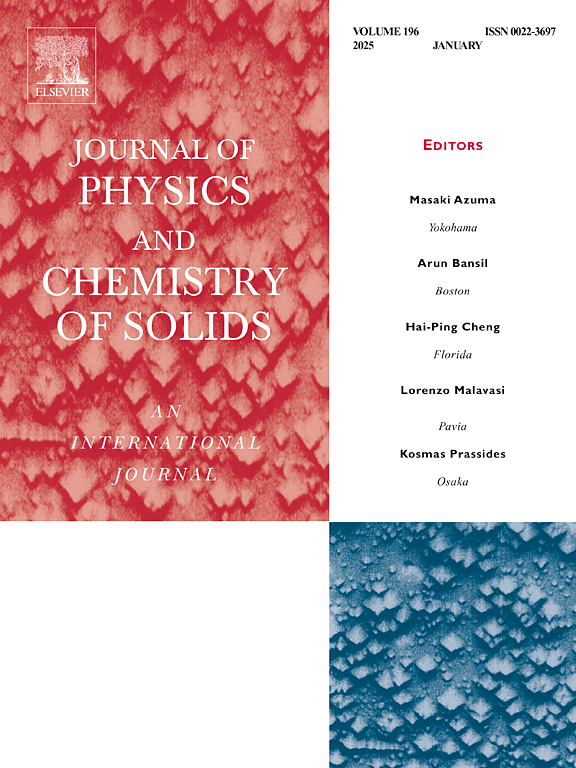DFT and experimental study of Mg substituted strontium oxide for optoelectronic applications
IF 4.3
3区 材料科学
Q2 CHEMISTRY, MULTIDISCIPLINARY
引用次数: 0
Abstract
Strontium oxide and magnesium-doped compositions were analyzed using density functional theory to explore their electronic, thermoelectric, and optical properties. Magnesium-doped SrO thin films with various concentrations were experimentally prepared on silicon substrates using the sol-gel spin-coating technique. Structural analyses confirmed the stable single-phase cubic crystalline structure, unaffected by doping. Electronic studies revealed a reduced band gap and the formation of states near the Fermi level, improving charge carrier transport. The thermoelectric evaluation indicated enhanced electrical conductivity that observed for pure SrO as 4.42 × 1019 (Ω m s)−1, whereas 9.43 × 1019 (Ω m s)−1 for maximum Mg containing composition. The lowered thermal conductivity is contributing to superior thermoelectric performance. Optical analyses demonstrated improved absorption and reduced optical band gap, affirming enhanced light interaction capabilities. The highest refractive index and real epsilon values were recorded at the higher energy regimes approximately 2.94 and 12.89, respectively, for composition containing maximum dopant content. The optical band gap of SrO was calculated as 2.50 eV and found to decrease with increment of Mg substituting concentration. Experimental results showed strong alignment with theoretical predictions, underscoring the potential of Mg-doped SrO thin films as promising candidates for advanced optoelectronic and thermoelectric applications.
使用密度泛函理论分析了氧化锶和掺镁成分,以探索它们的电子、热电和光学特性。实验采用溶胶-凝胶旋涂技术在硅基底上制备了不同浓度的掺镁氧化锶薄膜。结构分析证实了稳定的单相立方晶体结构,不受掺杂的影响。电子研究表明,带隙减小,费米级附近形成了一些状态,从而改善了电荷载流子的传输。热电评估表明,纯 SrO 的电导率为 4.42 × 1019 (Ω m s)-1,而最大含镁成分的电导率为 9.43 × 1019 (Ω m s)-1。热导率的降低有助于提高热电性能。光学分析表明,吸收率提高,光带隙减小,光相互作用能力增强。对于掺杂剂含量最高的成分,在较高能量下记录到的最高折射率和实际ε值分别约为 2.94 和 12.89。根据计算,氧化锰的光带隙为 2.50 eV,并且随着镁替代物浓度的增加而减小。实验结果与理论预测非常吻合,这表明掺杂镁的氧化锰薄膜有望成为先进光电和热电应用的候选材料。
本文章由计算机程序翻译,如有差异,请以英文原文为准。
求助全文
约1分钟内获得全文
求助全文
来源期刊
CiteScore
7.80
自引率
2.50%
发文量
605
审稿时长
40 days
期刊介绍:
The Journal of Physics and Chemistry of Solids is a well-established international medium for publication of archival research in condensed matter and materials sciences. Areas of interest broadly include experimental and theoretical research on electronic, magnetic, spectroscopic and structural properties as well as the statistical mechanics and thermodynamics of materials. The focus is on gaining physical and chemical insight into the properties and potential applications of condensed matter systems.
Within the broad scope of the journal, beyond regular contributions, the editors have identified submissions in the following areas of physics and chemistry of solids to be of special current interest to the journal:
Low-dimensional systems
Exotic states of quantum electron matter including topological phases
Energy conversion and storage
Interfaces, nanoparticles and catalysts.

 求助内容:
求助内容: 应助结果提醒方式:
应助结果提醒方式:


